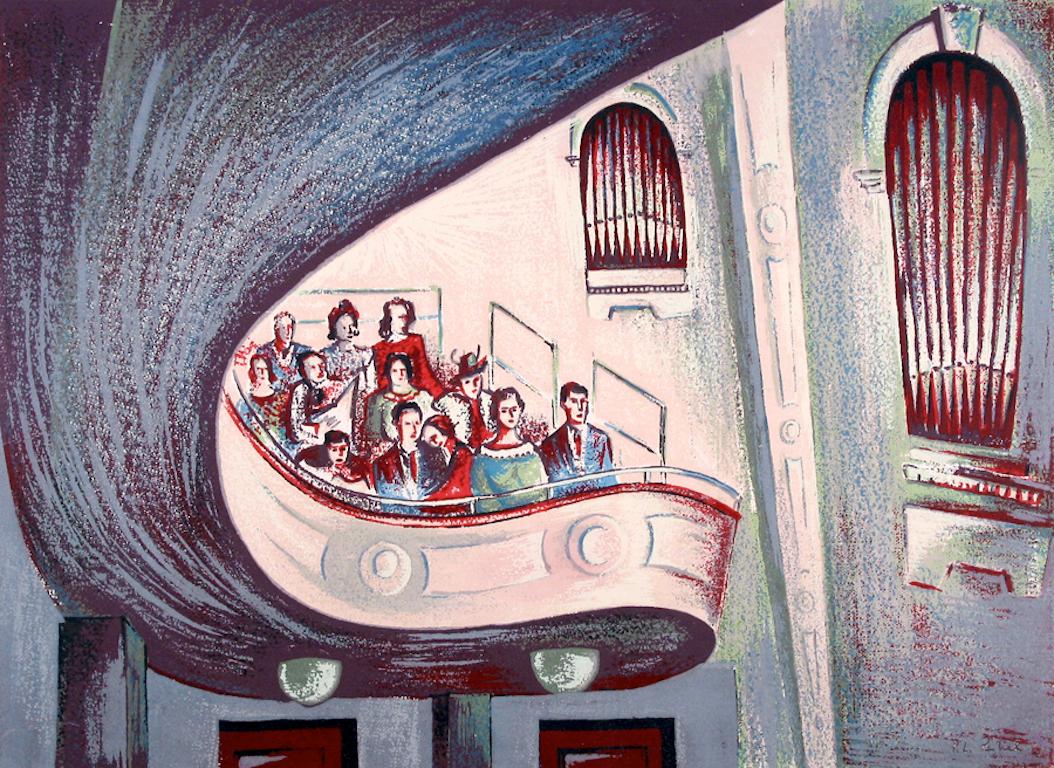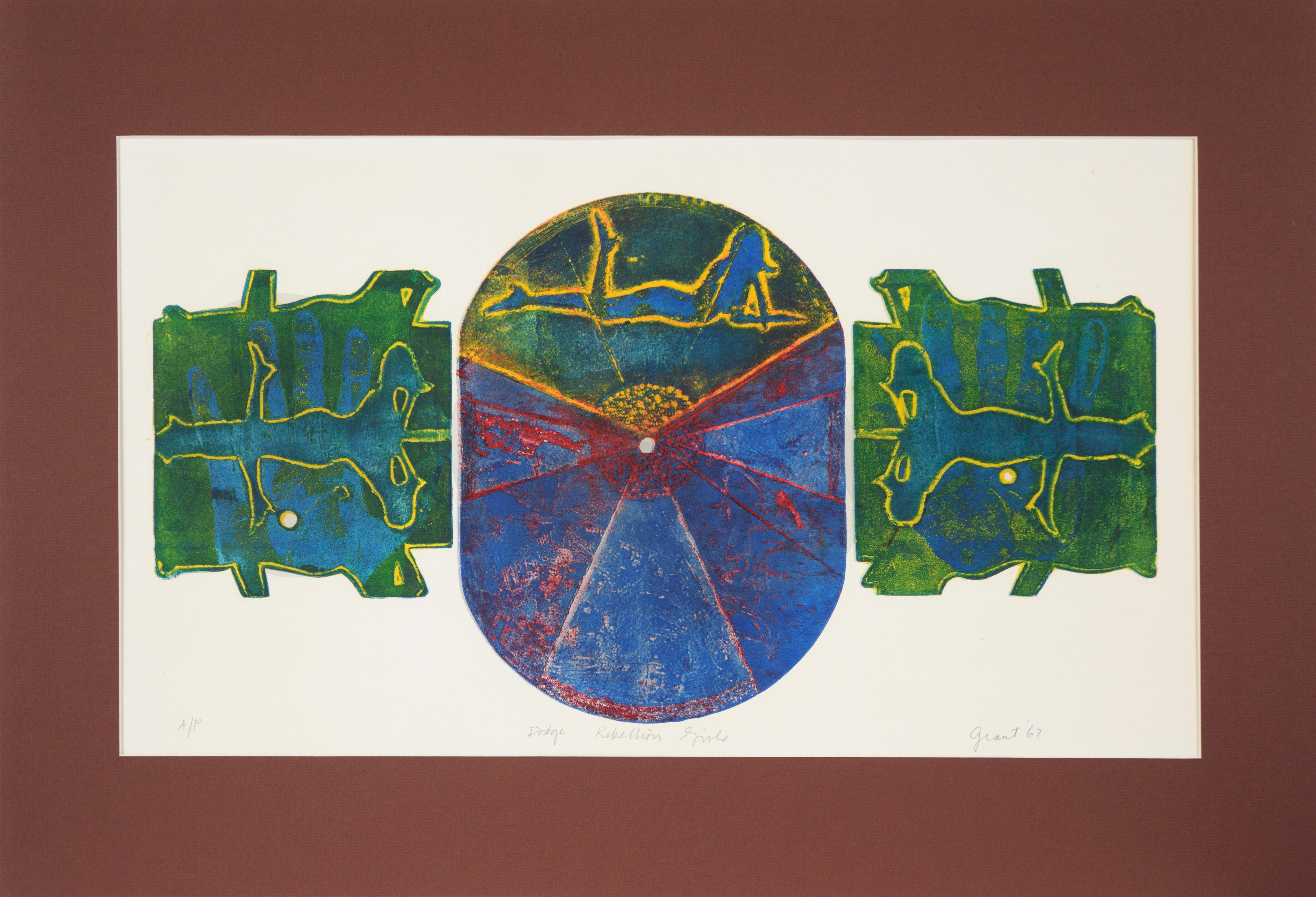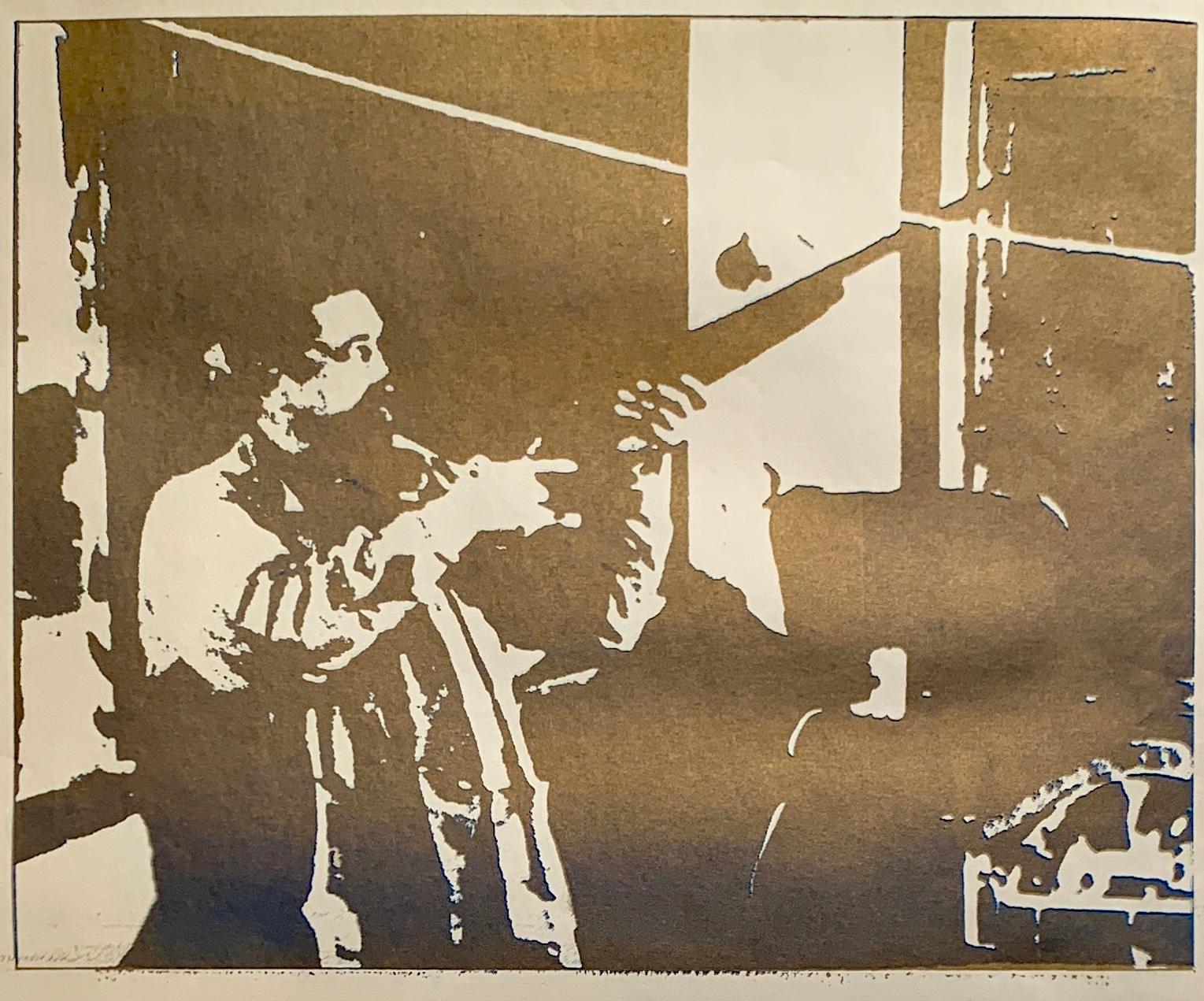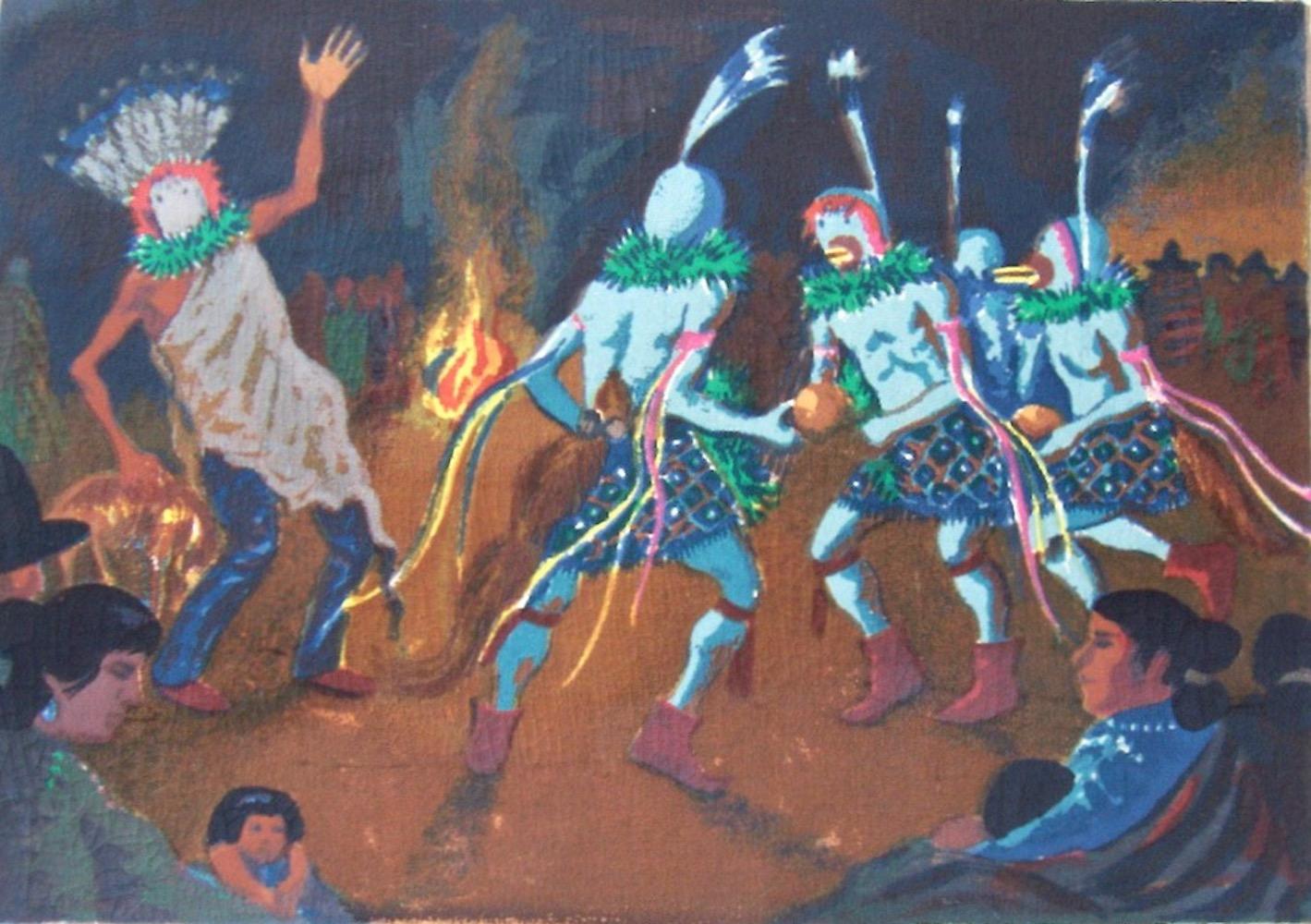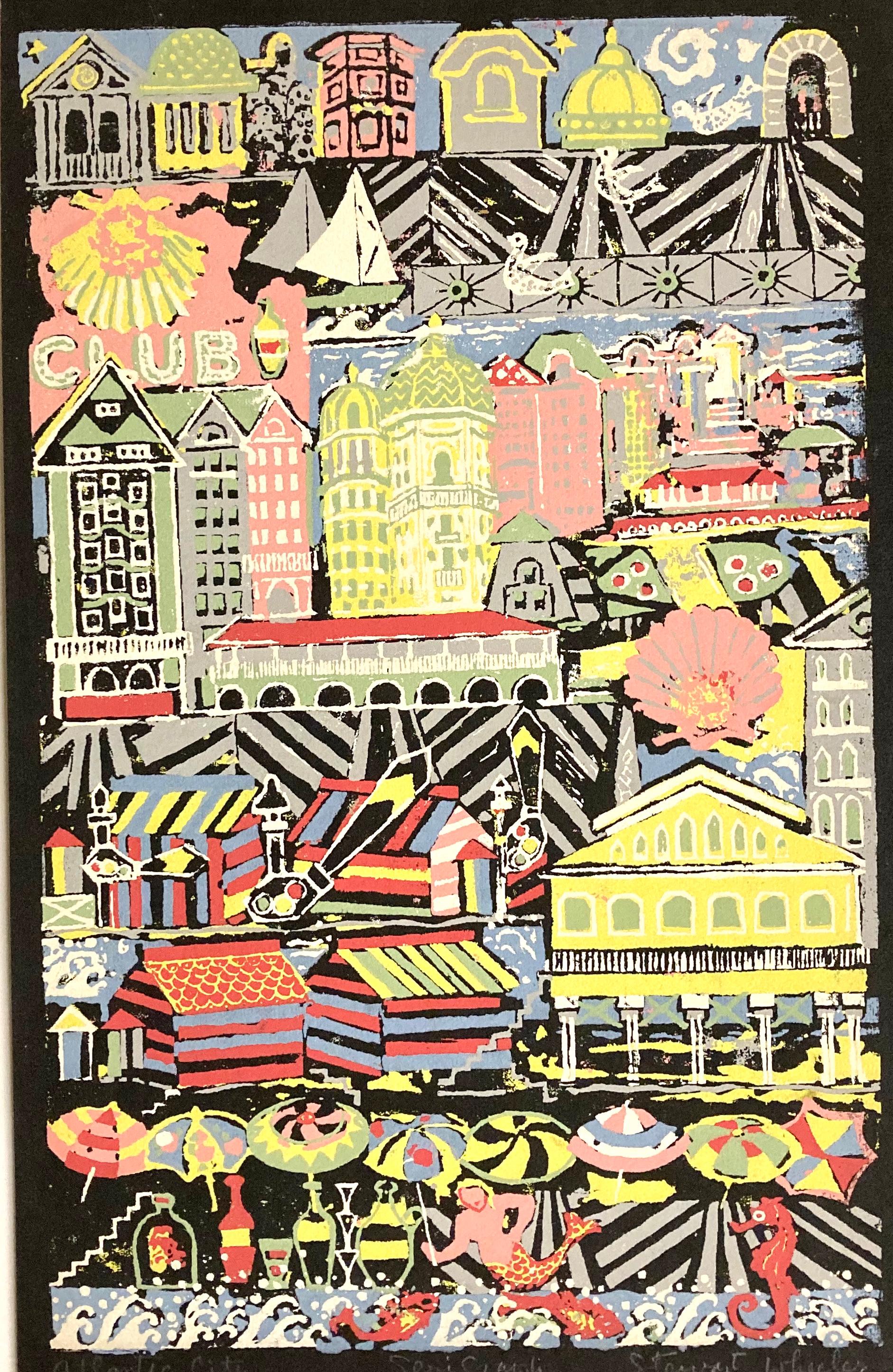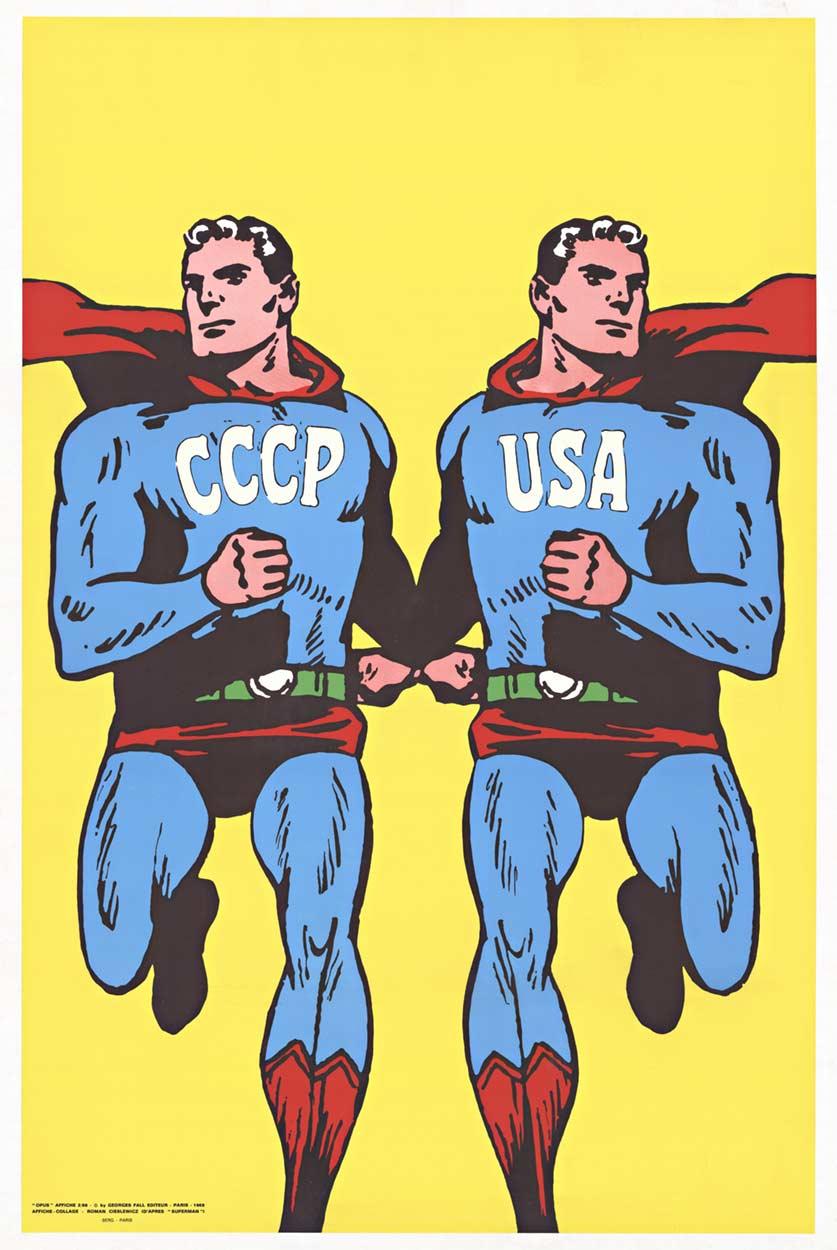Jacob Lawrence"The Capture, " Jacob Lawrence, Harlem Renaissance, Black Art, Haitian Series1987
1987
About the Item
- Creator:Jacob Lawrence (1917-2000, American)
- Creation Year:1987
- Dimensions:Height: 39.25 in (99.7 cm)Width: 28.25 in (71.76 cm)
- Medium:
- Movement & Style:
- Period:
- Condition:Excellent condition.
- Gallery Location:New York, NY
- Reference Number:1stDibs: LU1841210075272
Jacob Lawrence
One of the first Black artists to receive national acclaim in the United States, Jacob Armstead Lawrence (1917–2000) was born in Atlantic City, New Jersey, before moving to Philadelphia, Pennsylvania, and then to Harlem, New York, in 1930. While enrolled in a community after-school arts program, Lawrence developed his talents as a painter, drawing praise and encouragement from artist Charles Alston, who ran the program at the time. Despite his family’s financial struggles during the Great Depression, Lawrence continued his pursuit of the arts, developing a series of multipanel realist paintings dedicated to iconic Black historical figures, including Toussaint L’Ouverture, Frederick Douglass and Harriet Tubman. In 1938, he had his first solo exhibition at the Harlem YMCA and had begun to work for the Works Progress Administration (WPA).
In 1940, Lawrence received a grant from a philanthropic organization called the Rosenwald Fund, which allowed him to begin what would become his most famous work: The Migration Series, a narrative piece comprised of casein tempera paint on 60 18-by-12-inch hardboard panels featuring captions he’d written before he began to paint. (Fellow artist and future wife Gwendolyn Knight helped with the text.) Lawrence’s series focuses on the Great Migration of Black Americans from the agricultural South to the industrial North between 1910 and 1940.
By the end of the 1940s, Lawrence had earned widespread recognition for his important work and was the most celebrated Black artist in the United States. He continued covering Black historical figures throughout his career, though he also painted social commentaries on contemporary issues, like World War II and civil rights. He taught at the Art Students League in New York and at Black Mountain College in North Carolina (upon invitation from artist Josef Albers), among other institutions.
Lawrence’s works can be found in the collections of many major museums, including the Museum of Modern Art, the Metropolitan Museum of Art and the Whitney Museum of American Art in New York and elsewhere. His painting The Builders hangs in the White House today, as it was acquired by the White House Historical Association in 2007.
Find watercolor paintings, prints and more by Jacob Lawrence on 1stDibs.
- ShippingRetrieving quote...Ships From: Larchmont, NY
- Return PolicyA return for this item may be initiated within 3 days of delivery.
- "La Danse Barbare (from Les Saltimbanques), " Pablo Picasso, Figurative PrintBy Pablo PicassoLocated in New York, NYPablo Picasso (1881 - 1973) La Danse Barbare (from La Suite des Saltimbanques), 1905, printed 1913 Etching on Van Gelder Zonen wove paper Sheet 13 x 20 inches From the edition of 250...Category
Early 1900s Modern Figurative Prints
MaterialsPaper, Etching
- "Business-Men's Class, Y.M.C.A." George Bellows, Ashcan School PrintBy George Wesley BellowsLocated in New York, NYGeorge Bellows Business-Men's Class, Y.M.C.A, 1916 Signed, numbered "No. 41" and titled lower margin Lithograph on wove paper 11 1/2 x 17 1/8 inches Edition of 64 Provenance: Hirschl & Adler Galleries, New York Private Collection, Ohio Literature: Mason, 20. After his arrival from Columbus, Ohio in 1904, Bellows lived at the West Side YMCA. It was there that he met Eugene Speicher, another aspiring young artist who was to become his lifelong friend. Always interested in the anatomy of the human body, Bellows often satirized the various types who, while leading a sedentary life, feel compelled to devote a portion of their daily routine to physical self-improvement. Throughout his brief but illustrious career, George Wesley Bellows created striking scenes that documented ordinary American life in all its beauty and banality. Considered an American Realist, the artist eschewed embellishment, finding inspiration in the gritty boroughs of New York City, the rocky coastline of Maine, and, later, in his friends and family. Bellows garnered early recognition for his arresting portrayals of illegal prizefighting, dramatic works executed in dark tonal palettes that underscore the brutality of the violent sport. Bellows’ elderly Methodist parents hoped their son might pursue the ministry, a calling the extroverted athlete never received. The Columbus native competed on the baseball team at Ohio State University and also served as an illustrator for the college yearbook. In the fall of 1904—just months shy of his expected graduation—Bellows defied his father’s wishes and boarded a train to New York City in hopes of becoming a magazine illustrator like his idols Howard Chandler Christy and Charles Dana Gibson. Before leaving, he reportedly turned down an offer to play professional baseball with the Cincinnati Reds...Category
1910s Ashcan School Figurative Prints
MaterialsLithograph, Paper
- "Thanksgiving" Doris Lee, Family Genre Scene Interior, Americana, WPA, WoodstockBy Doris LeeLocated in New York, NYDoris Lee Thanksgiving, 1942 Signed lower right, titled lower left Lithograph on paper Image 8 3/4 x 11 3/4 inches Sheet 12 x 17 inches From the edition of 250 An American Scene pai...Category
1940s American Realist Interior Prints
MaterialsPaper, Lithograph
- "New York City Skyline View from the East River, " Lionel Reiss, Jewish ArtistBy Lionel ReissLocated in New York, NYLionel S. Reiss (1894 - 1988) New York City Skyline View from the East River Watercolor on paper 13 x 19 inches Signed lower left In describing his own style, Lionel Reiss wrote, “By nature, inclination, and training, I have long since recognized the fact that...I belong to the category of those who can only gladly affirm the reality of the world I live in.” Reiss’s subject matter was wide-ranging, including gritty New York scenes, landscapes of bucolic Bucks County, Pennsylvania, and seascapes around Gloucester, Massachusetts. However, it was as a painter of Jewish life—both in Israel and in Europe before World War II—that Reiss excelled. I.B. Singer, the Nobel Prize winner for Literature, noted that Reiss was “essentially an artist of the nineteenth century, and because of this he had the power and the courage to tell visually the story of a people.” Although Reiss was born in Jaroslaw, Poland, his family immigrated to the United States in 1898 when he was four years old. Reiss's family settled on New York City’s Lower East Side and he lived in the city for most of his life. Reiss attended the Art Students League and then worked as a commercial artist for newspapers and publishers. As art director for Metro-Goldwyn-Mayer, he supposedly created the studio’s famous lion logo. After World War I, Reiss became fascinated with Jewish life in the ‘Old World.’ In 1921 he left his advertising work and spent the next ten years traveling in Europe, the Middle East, and North Africa. Like noted Jewish photographers Alter Kacyzne and Roman Vishniac, Reiss depicted Jewish life in Poland prior to World War II. He later wrote, “My trip encompassed three main objectives: to make ethnic studies of Jewish types wherever I traveled; to paint and draw Jewish life, as I saw it and felt it, in all aspects; and to round out my work in Israel.” In Europe, Reiss recorded quotidian scenes in a variety of media and different settings such as Paris, Amsterdam, the Venice ghetto, the Jewish cemetery in Prague, and an array of shops, synagogues, streets, and marketplaces in the Jewish quarters of Warsaw, Lodz, Krakow, Lublin, Vilna, Ternopil, and Kovno. He paid great attention to details of dress, hair, and facial features, and his work became noted for its descriptive quality. A selection of Reiss’s portraits appeared in 1938 in his book My Models Were Jews. In this book, published on the eve of the Holocaust, Reiss argued that there was “no such thing as a ‘Jewish race’.” Instead, he claimed that the Jewish people were a cultural group with a great deal of diversity within and between Jewish communities around the world. Franz Boas...Category
1940s American Modern Landscape Drawings and Watercolors
MaterialsPaper, Watercolor
- "March Avery in Beret, " Milton Avery, American Modernism, Portrait of ArtistBy Milton AveryLocated in New York, NYMilton Clark Avery (1885 - 1965) March Avery in a Beret, 1951 Black crayon and graphite on cream wove paper 11 x 8 3/8 inches Signed and dated lower left; ...Category
1950s American Modern Portrait Drawings and Watercolors
MaterialsPaper, Crayon, Pencil, Graphite
- "Sheepshead, Brooklyn, Long Island" Oscar Bluemner, Modernist WatercolorBy Oscar BluemnerLocated in New York, NYOscar Bluemner Sheepshead, Long Island, 1907 Signed with the artist's conjoined initials "OB" and dated "4-30 - 5 - 30" / "Aug 3, 07" Watercolor on paper 6 x 10 inches Provenance: J...Category
Early 1900s American Modern Landscape Drawings and Watercolors
MaterialsPaper, Watercolor
- "Balcony" 1938 WPA Print Mid 20th Century American Broadway Theatre ModernismBy Leon BibelLocated in New York, NY"Balcony" 1938 WPA Print Mid 20th Century American Broadway Theatre Modernism. Silk screen on paper, 15” x 20". Numbered 15/20 lower left. Pencil si...Category
1930s American Modern Figurative Prints
MaterialsPaper, Screen
- "Dodge Rebellion Girls" - 1967 Original Silkscreen on Paper Artists ProofBy Marc Foster GrantLocated in Soquel, CA"Dodge Rebellion Girls" - 1967 Silkscreen on Paper 1967 color silkscreen depicting the Dodge Rebellion Girls by Marc Foster Grant (American, b. 1947). A silhouette of the 'dodge gi...Category
1960s American Modern Figurative Prints
MaterialsPaper, Ink, Screen
- "Gold and Blue Gun" 1970s Original Portrait SilkscreenLocated in Arp, TXArtist unknown "Gold and Blue Gun" c. 1970s Silkscreen on paper Image size 21.25"x17" paper size 26"x40" unframed $350 Unsigned *Listed price reflects custom framing selected by sell...Category
1970s American Modern Figurative Prints
MaterialsPaper, Screen
- Anna Barry, Navajo Yei Bei ChaiBy Anna BarryLocated in New York, NYAnna Barry (1907-2001), and her husband, the artist Ira Moskovitz, spent years in New Mexico in the late 1930s and 40s. They returned permanently to New York City in 1949. The screen print (also known as silk screen or serigraph) Navajo Yei...Category
Mid-20th Century American Modern Figurative Prints
MaterialsScreen
- Stewart Wheeler, Atlantic City (New Jersey)Located in New York, NYThe little that is know about the painter and printmaker Stewart Wheeler indicates that most of his career was spent in Philadelphia, Pennsylvania. And...Category
Mid-20th Century American Modern Landscape Prints
MaterialsScreen
- Original USSR USA Superman superpowers original vintage posterBy Roman CieslewiczLocated in Spokane, WAOriginal 1968 Cold War Superman Style Poster by Roman Cieslewicz USSR / CCCP USA. Created as the cover of the French left-wing art magazine ‘Opus Internatio...Category
1960s American Modern Portrait Prints
MaterialsScreen
